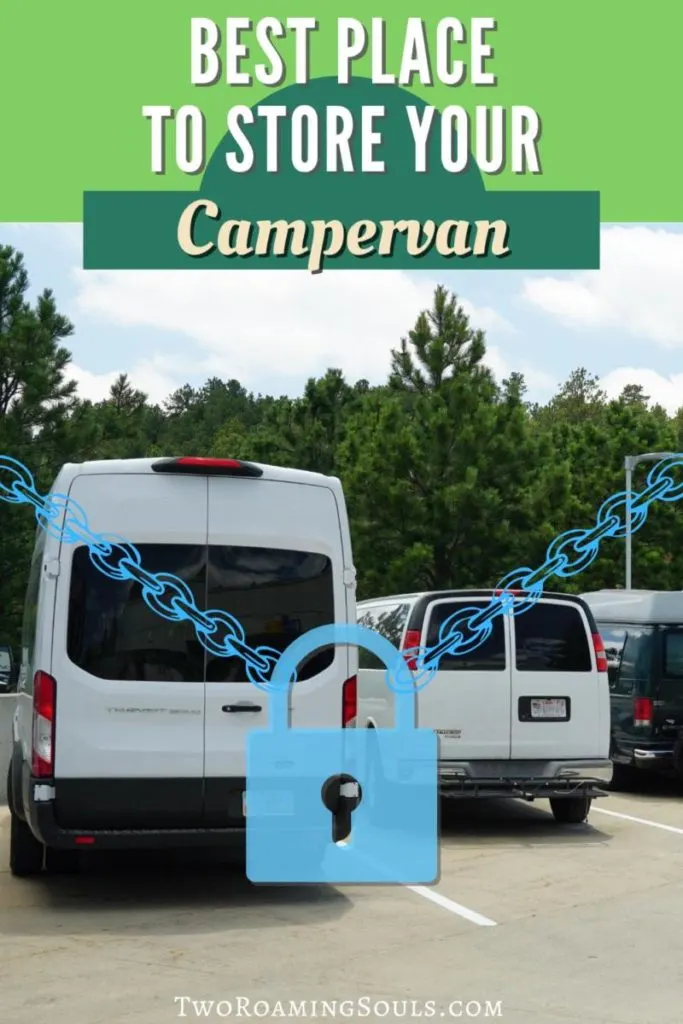Are you wondering where to store a campervan?
Whether you are a part-timer with nowhere to park your van at home, or a full-timer leaving your campervan behind for a trip. If you have to store your campervan, it’s nice to know that it is safe.
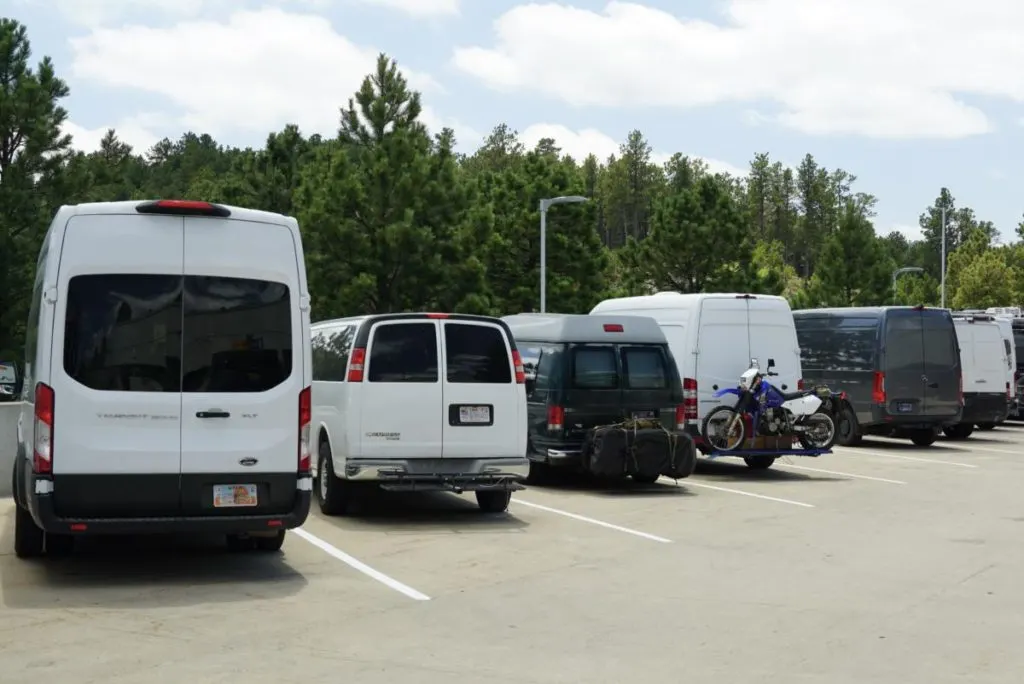
This is a problem that Emily and I face every time we travel places without our campervan. When visiting family or traveling internationally we have to leave our van behind. And since we are complete nomads, we don’t have a house to park the van at while we’re gone.
But even part-timers that maybe own a house or rent still might not be able to keep their campervan at their house.
No matter your predicament, here are the best ways how and where to store your campervan.
RV & Boat Storage Facility
This is our go-to method for storing our campervan while we travel away from it. The main benefit of this method is that many places have 24/7 security.
Some places will have a more expensive option for covered storage to protect your campervan from the elements.
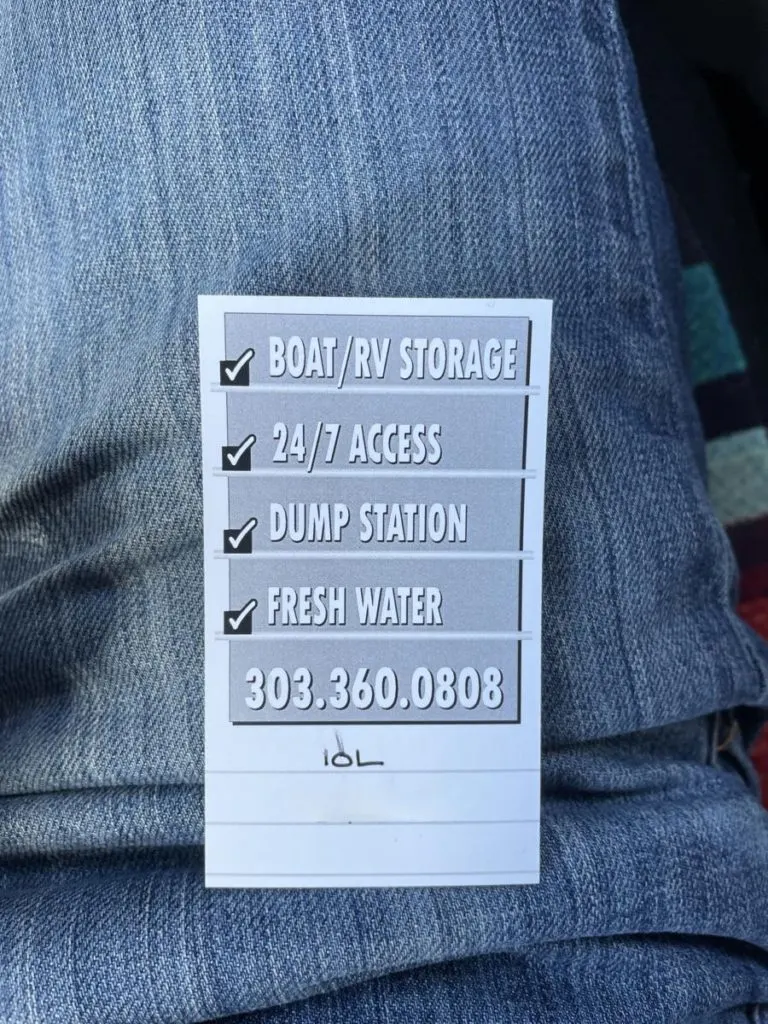
They also will commonly have an RV dump station, trash services, and fresh water fill-up. So it’s easy to prep your campervan for storage and also refill water when you come back to your van.
We really only leave our van when we are flying somewhere else. So we look for storage options near the airport we want to fly out of. Then we just take an Uber or taxi to the airport.
Since we are Colorado-based, we search for RV & Boat storage near the Denver airport. This option may be more or less feasible based on the airport you choose.
Ground Level Self-Storage Unit
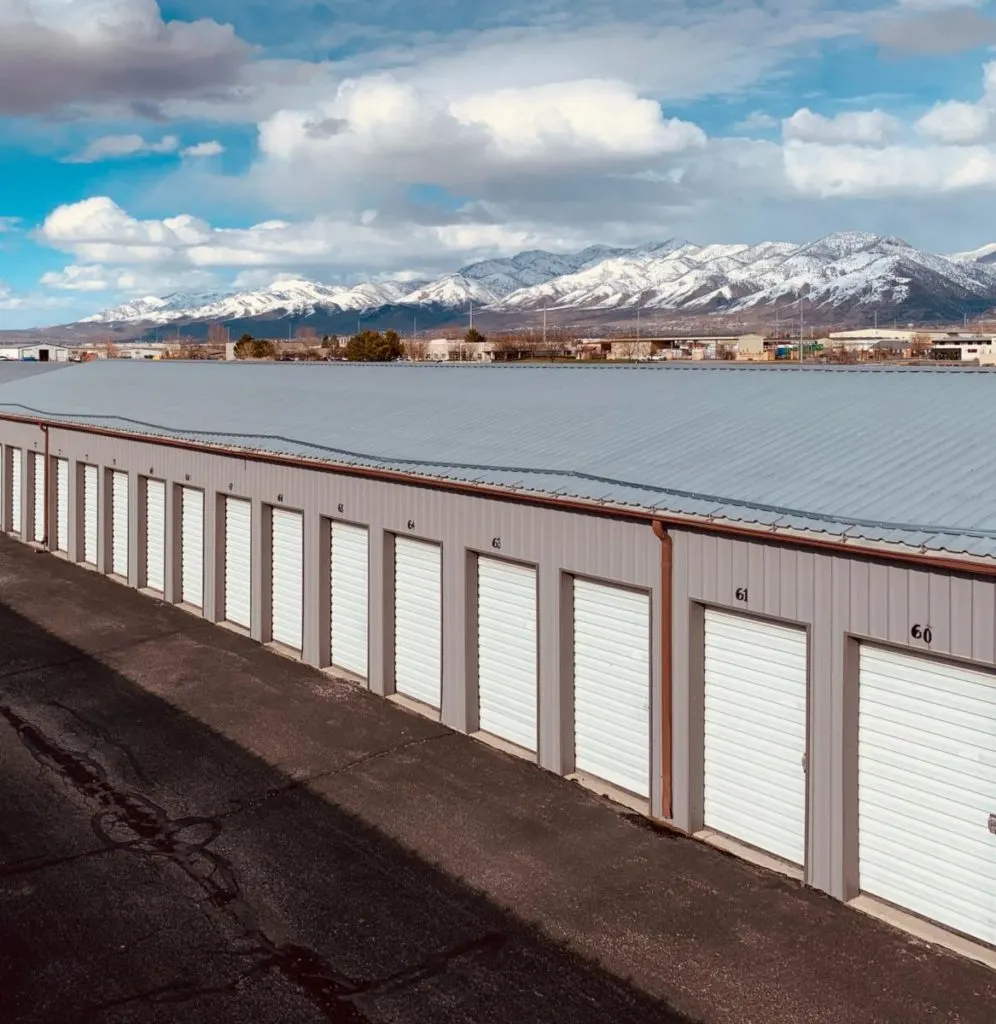
Ground-level self-storage is the best option if you want climate-controlled storage for your campervan. Obviously it must be a ground-level unit (otherwise you can’t drive in).
But just make sure your van is small enough to fit inside. Really tall or long campervans may have issues finding an affordable self-storage unit to fit inside.
This option is the most expensive place to store your campervan. But it’s also the most secure from theft or damage from weather. Self-storage units are typically climate controlled and thus protect your campervan from extreme heat or cold. You may have sensitive electronics, water in pipes, etc that could be damaged by extreme temperatures.
We’ve also noticed that some of the woodwork in our van has warped due to extreme temperature fluctuations when in storage.
If you are storing your campervan in a climate that is extremely hot or extremely cold, then a storage unit is a good option.
Friend or Family Member’s House
One of the best places to park your campervan while you are not using it is at a friend or family member’s house. But I think it’s safe to say that you don’t have that option since you are reading this post. But nonetheless worth mentioning.
In our experience, anyone who lives close enough to a major airport either doesn’t have a parking space for a campervan or their neighborhood has a higher theft risk for vehicles like campervans.
Conversely, friends or family that do have extra parking space don’t live close enough to an airport. So it doesn’t do us any good to leave our van.
Parking & Storage Apps
There are a variety of apps like Neighbor that could help you store your camper van. They connect people who have extra storage space with people who need storage space.
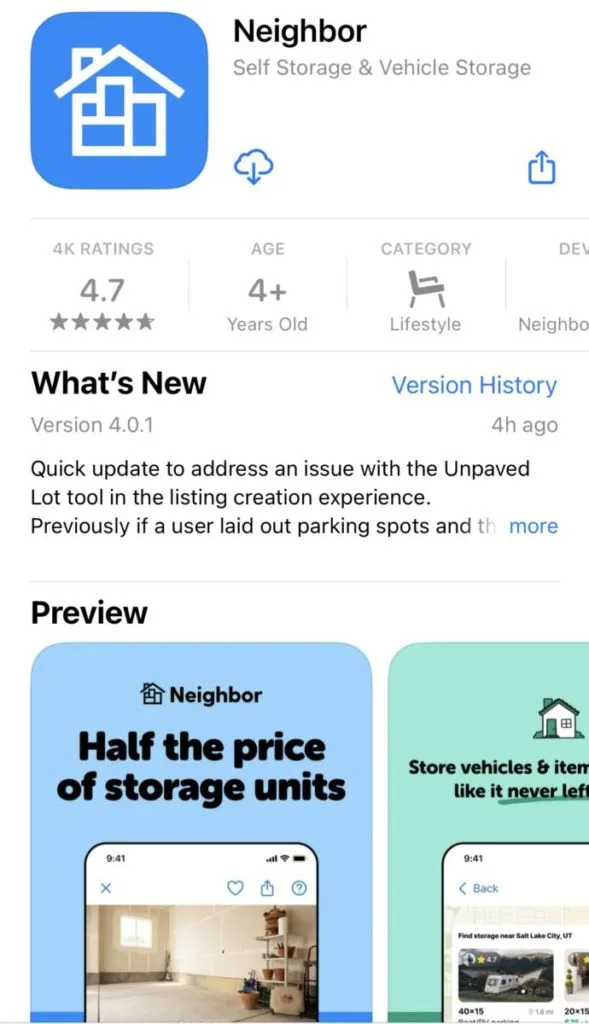
People offer everything from garage spaces, to driveway spaces and empty lots. So you need to be a little bit more discerning about the type of storage you are getting. It won’t necessarily have the same level of security as commercial businesses like self-storage or RV storage lots.
And there is some extra risk when dealing with peer-to-peer marketplaces.
However, the Neighbor App offers scam protection and the prices are usually much cheaper than the commercial options.
Airport Parking Lots
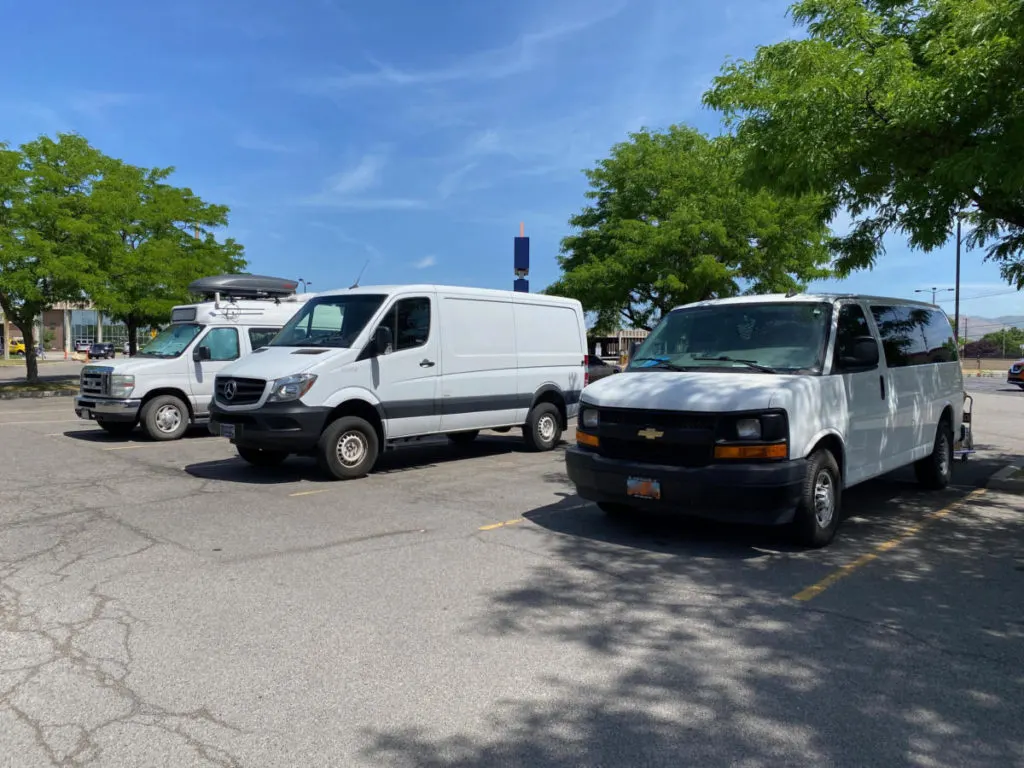
Another place to store your campervan when you are flying is at an Airport Parking Lot. This expensive option is sometimes a convenient option for short trips.
Airport lots are usually very close to the airport and include free transportation to the terminal. However, they typically have very little (if any) security. So there is a greater chance that your campervan experiences a break-in.
How To Prepare Your Campervan For Storage
Empty Black Water Tanks and Grey Water Tanks
If you have any black water tanks or grey water tanks, you should empty them. If the place where you store your campervan has an RV dump site, then you can do it there. Otherwise, look for an RV dump site nearby (using a site like rvdumpsites.net or similar).
Drain Pipes and Fresh Water
Drain all of the fresh water out of your tanks, pipes, and pumps. Follow manufacturer instructions for the different pieces of hardware involved.
For short periods of time, it can be okay to leave fresh water, as long as temperatures are above freezing.
When you return to your campervan, it’s a good idea to run a mix of bleach and water through your plumbing to sanitize it. Then flush everything with several gallons of fresh water before using.
Remove All Food & Scented Items
This one may depend on how long you are leaving your van and in what environment. Obviously, if you are storing your van for a long time, then it’s best to remove all food items.
But sometimes for short trips, you can leave some food items behind. Shelf-stable foods are sometimes fine to leave behind.
However, another reason to remove foods and other scented items is animals. You don’t want to attract mice and other pests to your campervan.
Take Out The Trash
Remove all trash from your campervan.
Defrost Your Refrigerator
Make sure you defrost your refrigerator ahead of time. Sometimes it takes a while for all the frost in your freezer to melt. Ideally, you get your fridge clean and dry before it’s time to leave your camper van.
Turn Off Or Prep Your Electrical System
If your campervan has a house electrical system, you can elect to turn it off completely. Depending on your system and the climate, there are several good actions to take.
Turn Off Electrical Entirely
Most campervan electrical systems are wired with switches or breakers between the power input and output. Flip the switch to disconnect power between your battery bank and inputs (solar panels, generator, etc). And also flip the switch(es) between your battery bank and outputs (inverter, DC loads).
Protect Your Batteries
Depending on the chemistry of your house batteries, follow best practices for storage. For example different battery chemistries and brands likely have steps for storing or winterizing batteries. This may include state-of-charge, temperature ranges, and ventilation.
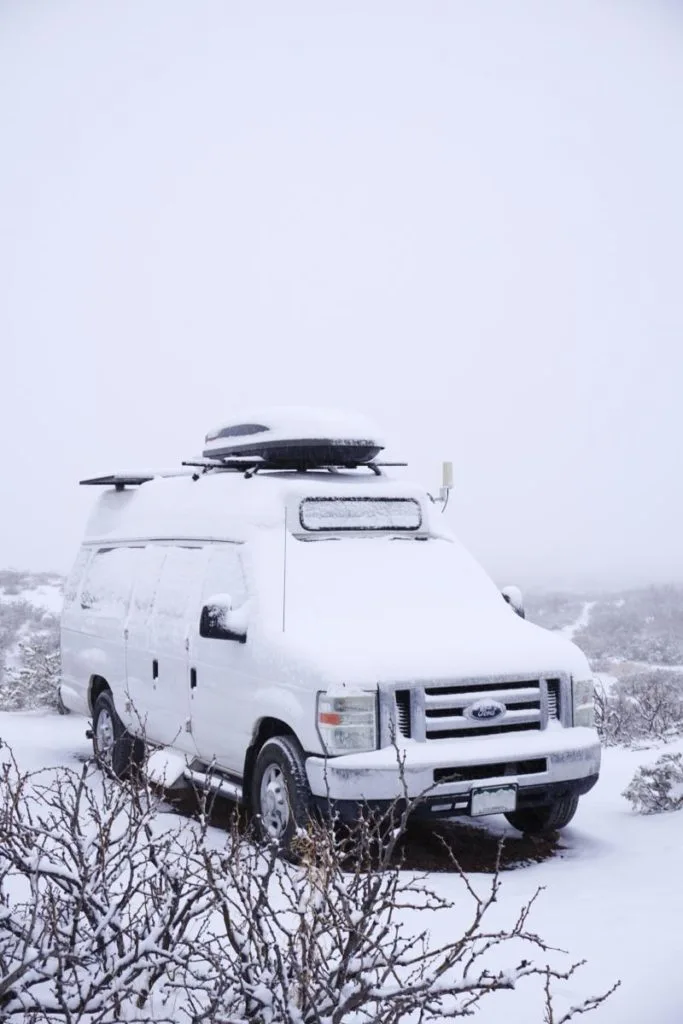
If the temperatures are going to be too hot or too cold, you may want to remove batteries and other sensitive electronics.
Turn Roof Vent Fan On ‘Auto’ (Optional)
If you have solar panels, you might choose to leave your vent fan on ‘auto’ when storing your van in hot sunny weather. Many of the best roof vent fans have an automatic setting.
You can set the fan to turn on above a certain temperature threshold. So if your campervan is baking in the hot sun for months at a time, the vent fan can keep the internal temperature from getting out of control.
However, you do need to be careful about setting it up properly. It requires a good sense of the climate and how much power your vent fans draws.
If you set the temperature threshold too low, you could overdraw your batteries. Though many modern batteries have a BMS with a low-voltage cutoff to protect them from over-discharge.
We usually store our van in Colorado where sunshine and heat typically always go hand in hand. So if the vent fan kicks on, it’s because it is sunny, thus providing plenty of power to run the fan. But if you store your van where it can be simultaneously really hot and cloudy, then you may need to set a higher temp threshold.
Turn Off Lights and Disconnect All Loads
Pretty self-explanatory, just make sure you turn off all the lights and disconnect any devices or appliances that may be drawing power.
Place Window Covers On Windows
If you have window covers, remember to secure them in all of your windows.
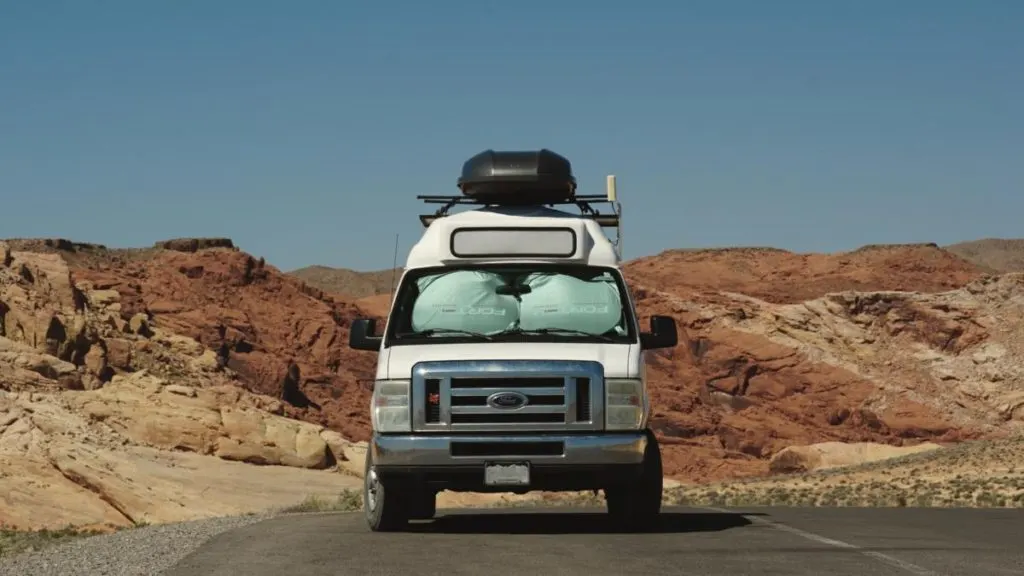
Most campervans have a set of reflective window covers that help keep out radiant heat. This aspect of campervan insulation is especially important when storing your van in hot weather.
It can help keep the internal temperature from getting too hot.
Disconnect The Starter Battery
Disconnect the starter battery if you are storing your campervan for an extended period of time (2 weeks or more). This will ensure that your battery wont be slowly drained while you are gone. Open the hood and disconnect the negative battery cable. Then tuck it to the side so that it will not resume contact with the negative battery terminal.
Put On Tire Covers
If you are storing your campervan in the sun, tire covers are an extra step you can take to protect your tires from sun damage. A relatively small investment in tire covers can protect the large investment you have made in tires for your campervan.
Takeaway | How And Where To Store Your Campervan
There are several good options when choosing where to store your campervan. You can find one to fit your needs and budget.
The climate plays a big factor in how and where to store your campervan. You need to be cautious of extreme temperatures on either end. And another thing to be conscious of is hail storms.
You may decide it’s worth it to pay extra for a climate-controlled self-storage unit so that your van is protected from the elements. Or for storing in milder weather, an RV & boat storage lot is usually a good value. Plus they typically have helpful amenities like an RV dump station, fresh water refill, vacuums, and more.
View all things vanlife on our Vanlife Page.
Save This Guide For ‘How & Where To Store Your Campervan’ For Later.
